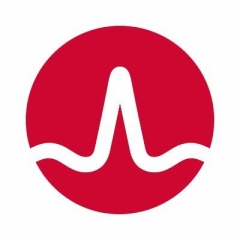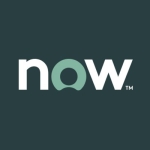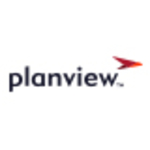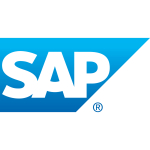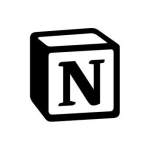What is our primary use case?
We started looking for a tool to manage our resources, that was our primary driver. Resource capacity utilization, resource management. But of course, the other features that are available, portfolio management, project management, we definitely wanted to use those as well. So, primarily, resource management, but project management and portfolio management as well.
It's an excellent tool for resource management. I really like the new interface, the user experience, which is coming out soon. Right now, it's something of a legacy format, and it's a little bit - I wouldn't say difficult to navigate - but people are used to very intuitive interfaces. Currently it looks like, "Ah, it's a legacy interface." But with the new one, I think it's making a really big impact. We have not started using it yet, though. We are currently using 15.2, which has some of those features. So we are waiting for 15.3 to start making use of them.
For resource management, it's a very strong tool, has all the features that you would desire in a resource management tool, so we're very happy with that.
What is most valuable?
Basically everything.
- You can identify resources by roles.
- You can manage by skill level.
- You can manage your capacity by roles.
- Assigning to projects.
- Booking resources in Soft Book, Hard Book.
- Gives you visibility into who is currently working on something else but may be available through the Soft Book feature.
I like every feature that's in there.
What needs improvement?
A little bit better financial management. Right now it is more accountant-related, the financial management - of course, it's finance, it has to be financial. But it should be a little bit easier for project managers.
To give an example, if you have a non-labor cost that you're tracking, let's say a software expenditure or license subscription, tracking that you need to manage as a resource in the project plan, that adds a lot of effort for product managers to maintain. If they can come with ways of simplifying the cost and financial management, that would be one thing that we would really like.
What do I think about the stability of the solution?
Never had any issues with a CA product.
What do I think about the scalability of the solution?
In terms of scalability, it is a little bit slow. Right now we have about 200 users, and we are bringing on our European counterparts as well - our company acquired another company - and we are trying to bring them on. It is slow. We've created a support ticket, and hopefully they'll respond. I think for regular day-to-day operations, it's okay. But when you get into Jaspersoft reporting, it is slow. And nowadays, people don't have patience, I don't have patience.
How are customer service and technical support?
Technical support, they're good. They get back to us pretty quickly. Never had any issues with them either. They get back to us quickly, they try to resolve the issue. They are definitely knowledgeable.
Which solution did I use previously and why did I switch?
We were Microsoft Project Server users. I think about seven years ago we started using Project Server with the same goals of a centralized repository and collaboration for project managers and team members; also, resource and financial management. We never got to the resource and financial management part of it, because I think on the time sheets side we were aggressive, and that did not go well with the resources, so we started using it only as a project repository.
We were in it all the time, and every year when there was a new demand for projects, and we were trying to set the portfolio for the next year, the question always was, "Okay, who's available to take up which projects?" And every time it was a spreadsheet, and I was working with 50 resource managers bringing their allocations and merging them; it was a nightmare.
And at any point in time, especially when a new demand would come in during the middle of the year, if you wanted to inject that project into the portfolio, we didn't know what the impact of that would be on other resources. Again, it would be another big round of, "Okay, call all the resource managers."
So that was our key need for the PPM tool.
How was the initial setup?
I think our decision was the right one. We went with the minimum configuration. We wanted to use it out of the box as much as possible. A CA consultant came and I think we had him for about three months. They came and gathered the requirements and configured it a little bit to suit our requirements and I did some additional fields here and there, but mostly out of the box. He was very knowledgeable, he helped us in setting up easily.
Right now we're in the adoption mode, and our timesheet compliance is around 92%. We're just about three months into it, and I really like it. We have still yet to use all the other features that come with CA PPM.
We are focusing for now on project management, and generating reports, out of that: status reports, timesheets, reporting on actuals. We want to get to the next phase where resource utilization capacity is accurately defined in CA PPM as well. Financial planning, it was initially out of the scope, but I think as soon as they started seeing actual costs in the system, everybody wanted to see, "Okay, what's the budget every month? What was the planned cost?" and things like that. So we're trying to put that data in, and set up processes for keeping it up to date and things like that. So far, so good.
What other advice do I have?
Regarding the new UX, it's very good. I wish it would come out faster, but I know that it has to be developed, tested, and rolled out. I like the way they're doing it in something like an Agile format, giving you some features and then gathering feedback and improving them, instead of trying to wait for a big bang, which I think might take couple years for them to finish. So, I like that. Could it be faster, is the only question.
When selecting a vendor, when our company is looking at vendors, we develop the RFP, gather our requirements and it has multiple sections:
- The financial stability of the vendor
- Where are they in user ratings, are they in the top quadrant?
- How long they've been in the system?
- Are they the industry leader?
- Are they committed to this product? We don't want to deal with a small company which has really good looking reports right now, but you don't know whether they're going to be in the business or not.
- How much they meet our requirements, obviously.
- We also look at how big they are in terms of supporting us.
- We want to make sure they have a broader customer base.
- They are constantly working on product improvements and things like that.
- And that they are there if you need help in implementation. Are resources from their side available to come and help us? We typically prefer people who are in the U.S., but not necessarily.
In terms of advice to others, there are a lot of players in the market. This is a major transition for our whole industry. You have DevOps coming in, you have Agile, you have a lot of other things automated - data creation and the like. You want to pick a vendor who can help you in all those things.
PPM is one part of the tool. There is also the argument about whether product managers will be there in 2020? So you want to look at something that is more current and has all these new technologies incorporated. If they're not incorporated, at least that they have those planned, so later on you can start to bring them on board.
And during the implementation, I would definitely say start simple. Start as simple as possible. Give as little additional work to each of your resources as possible. Then slowly, once you start to prove the value of the tool, you can slowly start to make more and more improvements on the new features.
Disclosure: My company does not have a business relationship with this vendor other than being a customer.

